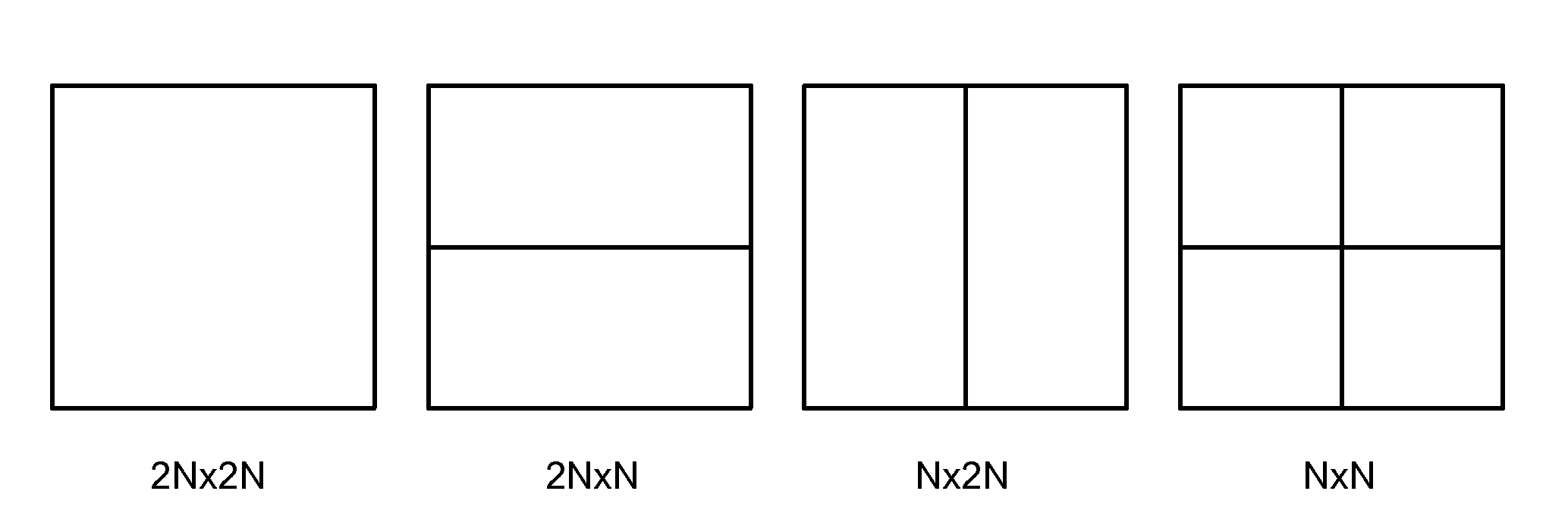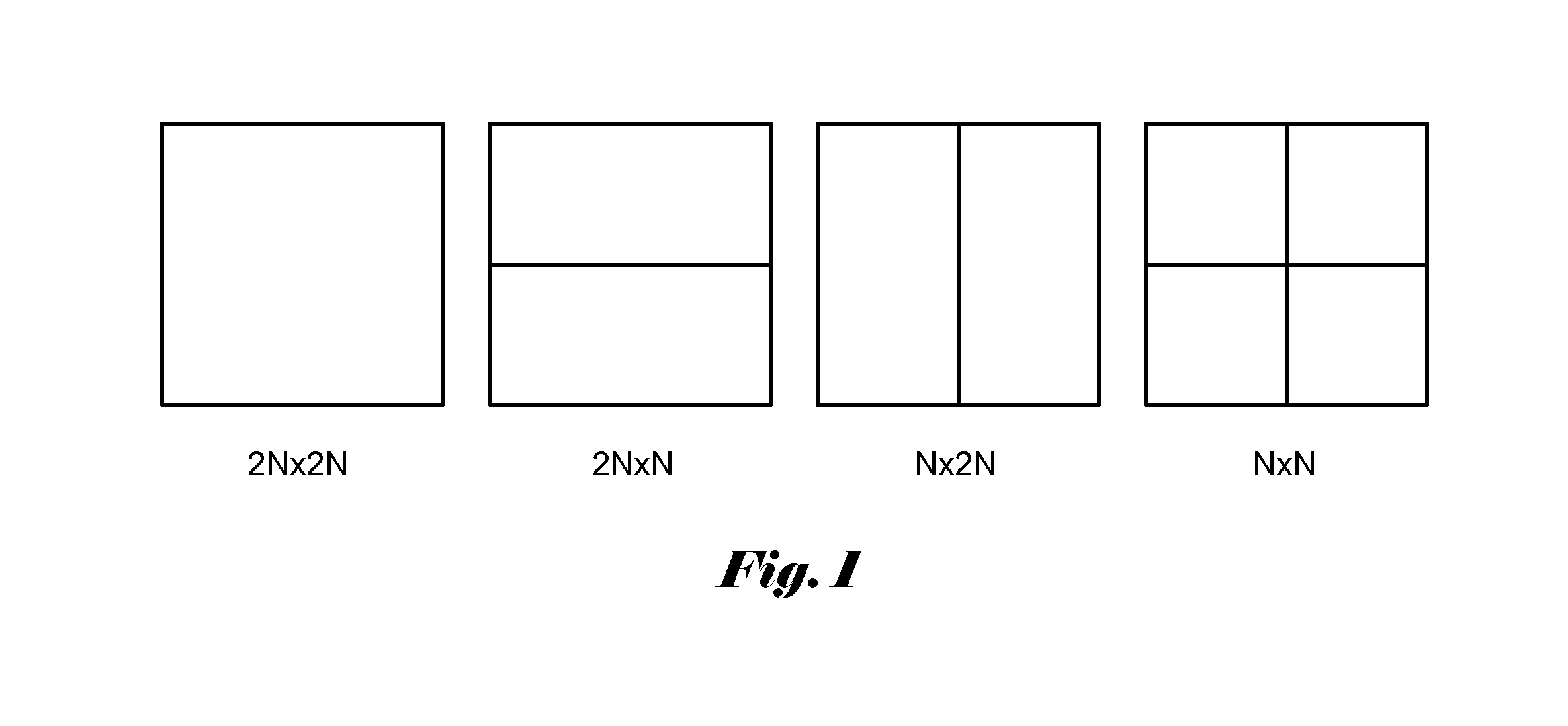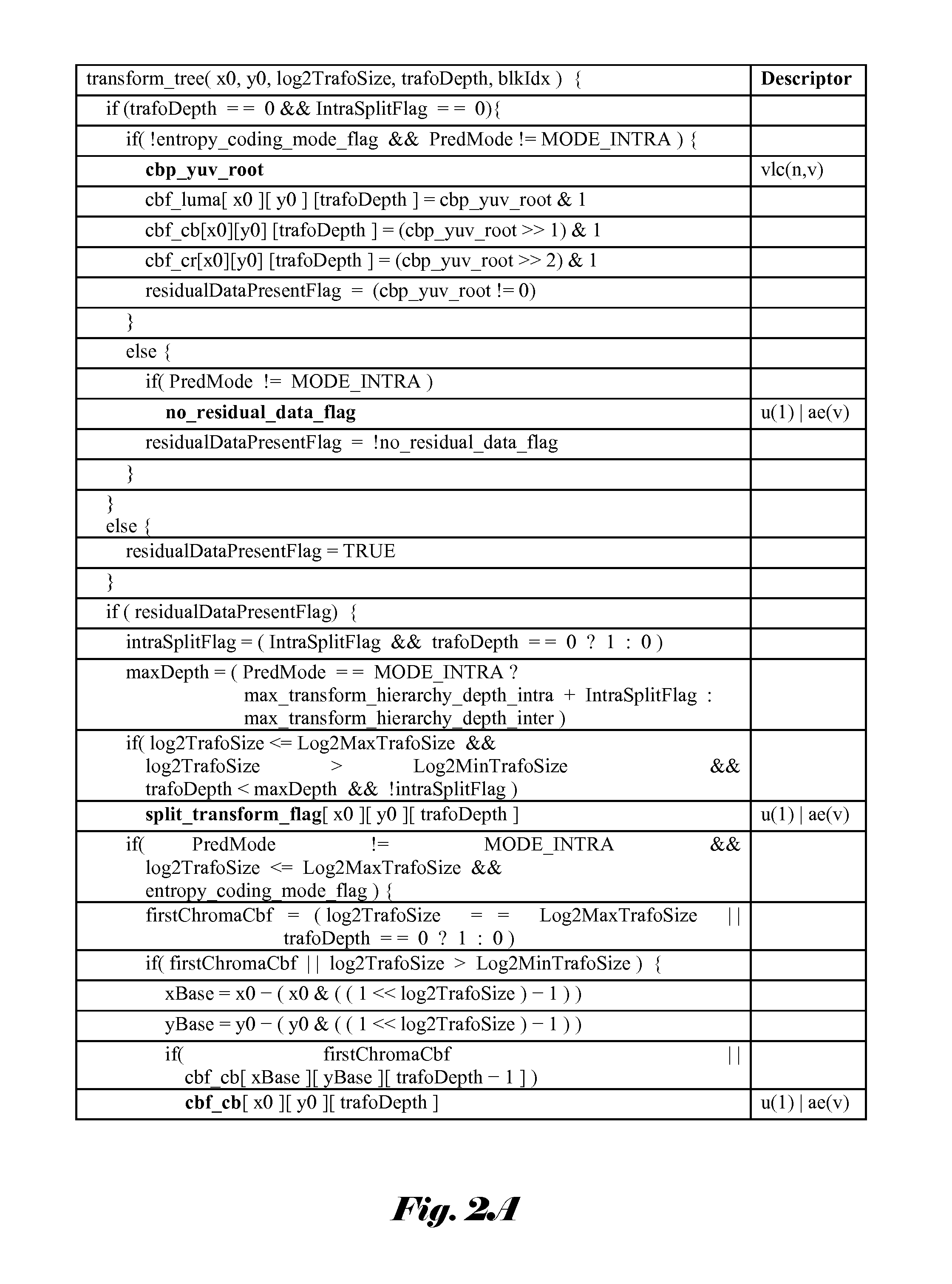Method and Apparatus of Transform Unit Partition with Reduced Complexity
- Summary
- Abstract
- Description
- Claims
- Application Information
AI Technical Summary
Benefits of technology
Problems solved by technology
Method used
Image
Examples
first embodiment
[0016]In first embodiment according to the present invention, the maximum width and height of a TU equals to the minimum (PU_width, PU_height) except for a 2N×2N coding unit with the 2N×2N partition type. Since a TU is always square, the maximum width and the maximum height of a TU are the same. According to this TU presentation scheme, for a 2N×2N CU and a PU partition type of N×2N, 2N×N or N×N, the TU used to transform the CU will be N×N. For a 2N×2N CU, the TU size can be either 2N×2N or N×N and the selection can be signaled by “split_transform_flag”. In order to incorporate the present invention, the transform tree syntax has to be modified. An example of transform tree syntax embodying the present invention is shown in FIGS. 3A-B. In FIG. 3A, the syntax section 310 that remains the same as the syntax section in the original syntax of FIG. 2A is omitted in FIG. 3A. When residualDataPresentFlag indicates the presence of residual data, split_transform_flag is set to 1. The transfo...
second embodiment
[0019]In second embodiment according to the present invention, the maximum width and height of a TU equals to the maximum (PU_width, PU_height) and the minimum width and height of a TU equals to the minimum (PU_width, PU_height) except for a 2N×2N CU with 2N×2N, N×2N or 2N×N partition types. For the 2N×2N CU with 2N×2N, N×2N or 2N×N partition types, TU can be either 2N×2N or N×N and the selection of TU size is indicated by split_transform_flag. If N×N PU size is allowed and selected, there is no need to send split_transform_flag. In order to incorporate the present invention, the transform tree syntax has to be modified. An example of transform tree syntax embodying the present invention is shown in FIG. 4. The syntax sections that are the same as the original syntax sections in FIGS. 2A-B are omitted. When residualDataPresentFlag indicates the presence of residual data, split_transform_flag is set to 1 as shown in syntax section 410 in FIG. 4. The conditions regarding whether trans...
third embodiment
[0022]In third embodiment according to the present invention, the TU depth is less than the maximum allowed depth for both INTER and INTRA prediction modes. For example, while the maximum allowed TU depth is 3 in HM version 2.0, an embodiment according to the present invention may limit the TU depth to 2. In the case that the TU depth is limited to 2, the transform size can be 2N×2N or N×N with the constraint of maximum TU size 32×32.
[0023]The coding performance of a system incorporating the third embodiment of the modified TU presentation scheme is also compared with the reference test model HM version 2.0. The performance in terms of BD-rate for YUV components are compared using simulation based on a set of standard test data, named Class A through Class E as shown in Table 5A for INTRA prediction, in Table 5B for Random Access setting and in Table 5C for Low Delay setting. Furthermore, the simulation systems used to compare the performance are configured for High Efficiency opera...
PUM
 Login to View More
Login to View More Abstract
Description
Claims
Application Information
 Login to View More
Login to View More - R&D
- Intellectual Property
- Life Sciences
- Materials
- Tech Scout
- Unparalleled Data Quality
- Higher Quality Content
- 60% Fewer Hallucinations
Browse by: Latest US Patents, China's latest patents, Technical Efficacy Thesaurus, Application Domain, Technology Topic, Popular Technical Reports.
© 2025 PatSnap. All rights reserved.Legal|Privacy policy|Modern Slavery Act Transparency Statement|Sitemap|About US| Contact US: help@patsnap.com



